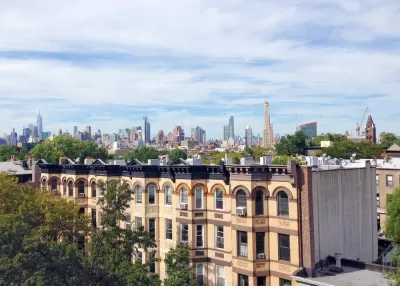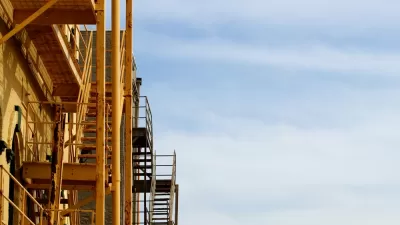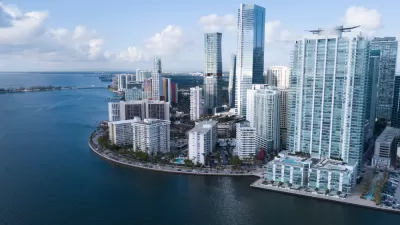Vacancy rates in New York City have climbed to unexpected heights in 2020, and landlords aren't pinning all the blame on a pandemic-induced urban exodus.

Georgia Kromrei reports on the state of the New York City rental market, six months into the pandemic and over a year after the state approved a law that reformed rent control against the wishes of landlords in the city.
Kromrei's coverage centers around the experience of Sharon Redhead, a second-generation landlord in East Flatbush, who is thinking of getting out of the landlord business, pining the blame for a sagging rental market on the new law—not the coronavirus.
"Before the rent law was changed last year, [Redhead] could raise rents to cover renovation costs and improve her family’s assets at the same time. Market-rate apartments in her part of Brooklyn could fetch $1,500," according to the article.
Now vacancy rates are soaring in New York City as landlords like Redhead leave units vacant rather than pay for improvements to attract tenants.
The vacancy rate in New York has soared since the onset of the pandemic. Landlord groups don’t blame Covid as much as they do the new law’s limits on how much landlords can be reimbursed for renovations. Some landlords also say they are reluctant to fill vacant apartments because they think state legislators might change the law in their favor.
When mom and pop landlords get out out of the business, the likely buyer of those properties is a private equity group, according to Redhead.
Some of the largest rental landlord in the city have already been implementing a practice called warehousing since the state law was passed, according to the article. "A month after last year’s changes to the law, Blackstone Group announced that it was halting renovations at Stuyvesant Town," according to Kromrei. "Its practice of keeping apartments vacant — which some call warehousing — soon came to light, although the firm later said it was renovating and leasing apartments as usual. According to numerous other multifamily property owners, however, warehousing is now widespread."
The article includes more data, including the results of a survey Community Housing Improvement Project that digs into the growth of the vacancy rate at the lower end of the rental market in New York City during the pandemic of 2020.
FULL STORY: From unthinkable to reality: Cheap NYC apartments sit vacant

Planetizen Federal Action Tracker
A weekly monitor of how Trump’s orders and actions are impacting planners and planning in America.

San Francisco's School District Spent $105M To Build Affordable Housing for Teachers — And That's Just the Beginning
SFUSD joins a growing list of school districts using their land holdings to address housing affordability challenges faced by their own employees.

The Tiny, Adorable $7,000 Car Turning Japan Onto EVs
The single seat Mibot charges from a regular plug as quickly as an iPad, and is about half the price of an average EV.

Seattle's Plan for Adopting Driverless Cars
Equity, safety, accessibility and affordability are front of mind as the city prepares for robotaxis and other autonomous vehicles.

As Trump Phases Out FEMA, Is It Time to Flee the Floodplains?
With less federal funding available for disaster relief efforts, the need to relocate at-risk communities is more urgent than ever.

With Protected Lanes, 460% More People Commute by Bike
For those needing more ammo, more data proving what we already knew is here.
Urban Design for Planners 1: Software Tools
This six-course series explores essential urban design concepts using open source software and equips planners with the tools they need to participate fully in the urban design process.
Planning for Universal Design
Learn the tools for implementing Universal Design in planning regulations.
Smith Gee Studio
City of Charlotte
City of Camden Redevelopment Agency
City of Astoria
Transportation Research & Education Center (TREC) at Portland State University
US High Speed Rail Association
City of Camden Redevelopment Agency
Municipality of Princeton (NJ)





























